#Gregory Sierra
Text


9 notes
·
View notes
Text
In 1947, a man was pulled from his car and was later found in a grisly condition; his leg had been eaten off. Some speculated this was the work of the Jersey Devil as this happened in the woods in New Jersey. ("Jersey Devil", X-Files, TV)
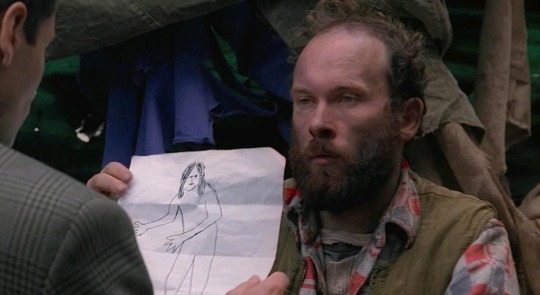
#nerds yearbook#sci fi tv#xfiles#x files#xphile#1947#cryptid#jersey devil#chris carter#joe napolitano#david duchovny#fox mulder#agent fox mulder#gillian anderson#dana scully#agent dana scully#jason gray stanford#fbi#claire stansfield#wayne tippit#gregory sierra#michael macrae#jill teed#tamsin kelsey#andrew airlie#bill dow#hrothgar mathews#jayme knox#scott swanson#sean o'byrne
11 notes
·
View notes
Text



Face of the 1970s: Gregory Sierra.
17 notes
·
View notes
Text

Gregory Sierra on the set of "Barney Miller" (1976)
49 notes
·
View notes
Text
THE TOWERING INFERNO (1974) ★★★★☆
THE TOWERING INFERNO (1974) ★★★★☆

View On WordPress
#Dabney Coleman#Don Gordon#Elizabeth Rogers#Faye Dunaway#Felton Perry#Fred Astaire#George Wallace#Gregory Sierra#Jack Collins#Jennifer Jones#John Crawford#John Guillermin#Mike Lookinland#Norm Grabowski#Norman Burton#O. J. Simpson#Olan Soule#Paul Comi#Paul Newman#Richard Chamberlain#Robert Vaughn#Robert Wagner#Ross Elliott#Scott Newman#Sheila Matthews Allen#Steve McQueen#Susan Blakely#Susan Flannery#William Holden
2 notes
·
View notes
Text
LA TOUR INFERNALE (1974)






























L'architecte Douglas « Doug » Roberts revient à San Francisco pour l'inauguration du plus grand gratte-ciel du monde qu'il a lui-même conçu, la « Tour de verre » , un édifice d'une taille record avec près de 515 mètres de haut et 138 étages.
Au cours de l'inauguration, un court-circuit se produit dans un local technique au 81e étage, résultant d'un échauffement de câbles électriques non isolés et dont la cause est une installation électrique sous-dimensionnée pour un tel bâtiment (économie d'argent sur la construction par le promoteur, sans tenir compte des recommandations de l'architecte).
Bientôt, un incendie se déclare dans le local technique, au moment même où la cérémonie d'inauguration bat son plein au 135e étage de l'immeuble. Alors que le feu se propage, détruisant tout sur son passage, Michael O'Hallorhan, un colonel du San Francisco Fire Department, arrive sur les lieux et organise le sauvetage des trois cents invités qui se sont retrouvés piégés par les flammes, avec l'aide de l'architecte Doug Roberts.
#La Tour infernale#The Towering Inferno#John Guillermin#Richard Martin Stern#Thomas N. Scortia#Frank M. Robinson#John Williams#Paul Newman#Steve McQueen#William Holden#Faye Dunaway#Fred Astaire#Susan Blakely#Richard Chamberlain#Jennifer Jones#O.J. Simpson#Robert Vaughn#Robert Wagner#Susan Flannery#Norman Burton#Gregory Sierra#Dabney Coleman#John Crawford#Malcolm Atterbury#Ralph Grosh#Mike Johnson#Jenny Sullivan
1 note
·
View note
Text
Vampires (1998)
Benvenuti o bentornati sul nostro blog. Dopo aver fatto diversi articoli sull’animazione e la Disney, siamo tornati a parlare di live-action e questa volta l’abbiamo fatto con uno dei registi europei che nell’ultimo periodo si è dimostrato veramente abile. Il film in questione è Inexorable. La storia parla di Marcel, uno scrittore divenuto famoso dopo aver pubblicato il suo primo libro,…

View On WordPress
#action#azione#Cary-Hiroyuki Tagawa#Columbia Pictures#Daniel Baldwin#Don Jakoby#film#Film Office#Gary B. Kibbe#Greg Nicotero#Gregory Sierra#horror#Jack Crow#James Woods#John Carpenter#John Carpenter&039;s Vampires#John Steakley#JVC Entertainment Networks#Largo Entertainment#Mark Boone Junior#Maximilian Schell#movies#Nuovo Messico#Recensione#Recensione film#Robert Kurtzman#Sandy King#Sheryl Lee#Spooky Tooth Productions#Storm King Productions
1 note
·
View note
Text
happy new music friday to meeee :3
#HOZIER SONG WITH BEDOUINE EVERYBODY CHEER RIGHT FUCKIN NOWWWWWWWWW#I’M SO OBSESSED WITH JULY BY HOZIER TOO OH MY GODDDD#i don’t really listen to post malone but if you put chris stapleton tim mcgraw sierra ferrell billy strings ANDDDD dolly on an album#i WILL be checkin that thang out#i see ray lamontagne with gregory alan isakov next month and you have no idea how excited i am omgggg#I’M SO IN LOVE WITH THE WHOLE RAY LAMONTAGNE ALBUM 😭😭😭😭😭#and that lady gaga and bruno mars song i mean who doesn’t love a lil bruno mars with a funky hat and retro fit#I GOT THAT BASIC BITCH IN ME LEAVE MEEE ALONEE#literally buzzing i love new music fridays so stinkin much#new music friday#music posting
2 notes
·
View notes
Note
could you do a web about loving someone who doesn’t love you back
certainly!


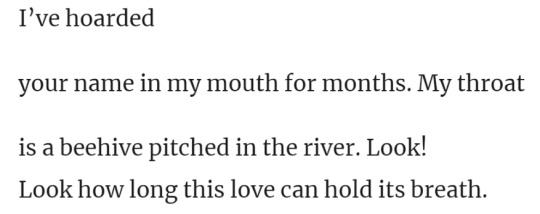

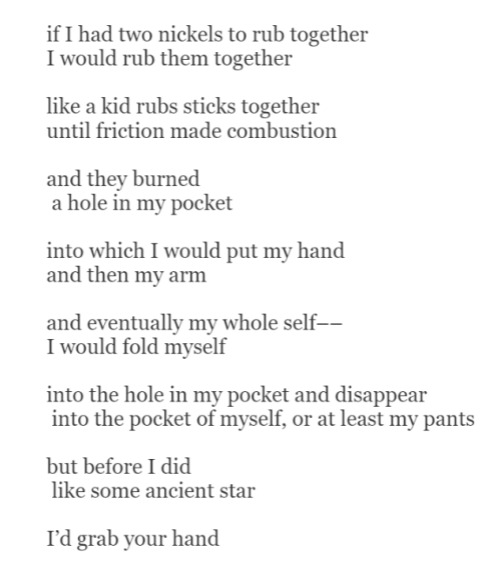

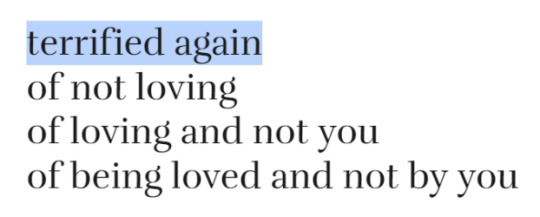


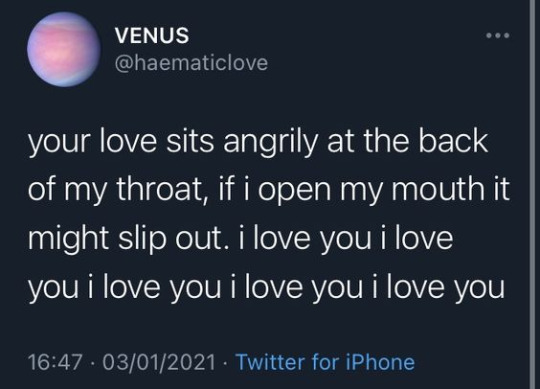





I Wish That You Loved Me.
I Swear Somewhere This Works, Trista Mateer | For the Best, Gregory and the Hawk | Today Means Amen, Sierra DeMulder | from the unsent project | poem I wrote sitting across the table from you, Kevin Varrone | The Garden of Eden, Ernest Hemmingway | Cascando, Samuel Beckett | Hungry Thread of Nerves, Fatima Aamer Bilal | Catalog of Unabashed Gratitude, Ross Gay | @/haematiclove on twitter | Lullabies, Lang Leav | In a Dream You Saw a Way To Survive, Clementine von Radics | Don’t You Dare (Make Me Fall in Love With You), Kaden MacKay | Honeybee: Baggage, Trista Mateer | If This Were My Book The Ending Would Be So Different, Natalia Vela
[text transcription in alt text]
#poetry#web weaving#prose#literature#web weaving poetry#web weave#parallels#poem#compilation#on love#unrequited love#I queue you would forget forget-me-nots#༺✿ web weaves by basil ✿༻#i know ive used some of these before but i think the prompt justifies it!#Trista Mateer#Sierra DeMulder#Kevin Varrone#Ernest Hemmingway#Samuel Beckett#Ross Gay#Lang Leav#clementine von radics#Natalia Vela
1K notes
·
View notes
Text
•[ Cars Au. ]•
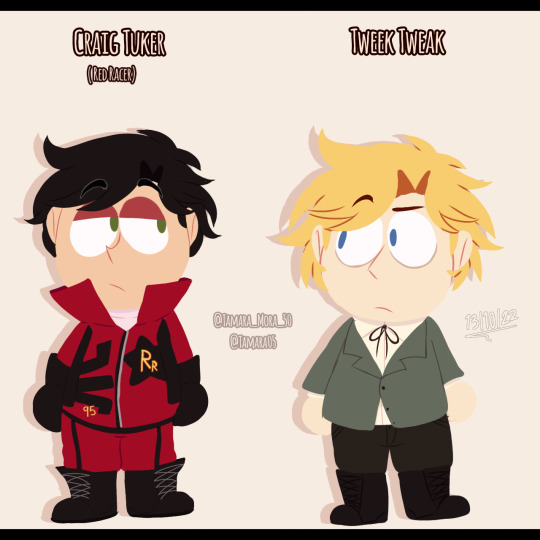
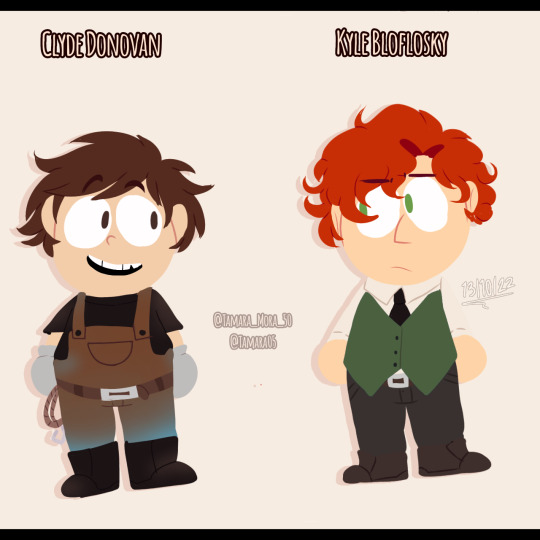


•[ English]•
Hello good here I bring you a drawing, look passing context of this in a nutshell I was here on IG watching videos and in that I see a guy with some lightning McQueen sandals and with the song in the background, and in my mind I said to myself "Ha, that would be Craig" and I start thinking and I say, "Hey how would an AU be where Craig will be a racer called Red Racer and he has to pass some events from the movie".
And that's where I got this stupid idea for an AU Hahaha, I did design and all of them, and to make some things make sense I would change it slightly, because well, here they are humans not cars, here cars will only be used in some parts, because I think it's very obvious that some scenes could easily be of someone running or switching.
•[ Characters ]•
•McQueen: Craig Tuker ( Red Racer )
•Sally: Tweek Tweak
•Mate: Clyde Donovan
•Doc Hudson: Kyle Bloflosky
•Luigi: Butters Stotch
•Guido: Thomas
•Sargento: Crhistophe ( The mole )
•Fillmore: Kenny Mccormick
•Ramón: Gregory
•Flo: Bebé Stevens
•Sheriff: Tolkien Black
•Red: Pip Pirrup
•Chick Hicks: Eric Cartman
•Strip: Stan Marsh
•[ Español ]•
HOLAAAAA buenas aquí les traigo un dibujo, miren pasando contexto de esto en pocas palabras estaba yo aquí en Instagram viendo videos y en eso veo a un chico con unas sandalias de rayo McQueen y con la canción de fondo, y en mi mente me dije a mi misma "Ja, ese sería Craig" y me pongo a pensar y digo, "Oye cómo sería un AU en dónde Craig será un corredor llamado Red Racer y tiene que pasar algunos acontecimientos de la película"
Y ahí fue donde se me viene está idea toda estúpida para un AU Jajaja, está hice diseño y todos en si, y para que algunas cosas tengan sentido se cambiaría ligeramente, por qué bueno pues, aquí son humanos no Autos, aquí los autos solo se utilizará en sierras partes, por qué creo que es muy obvio que algunas ecenas podrían ser fácilmente de alguien corriendo o cambiándo
•[ Personajes ]•
•McQueen: Craig Tuker ( Red Racer )
•Sally: Tweek Tweak
•Mate: Clyde Donovan
•Doc Hudson: Kyle Bloflosky
•Luigi: Butters Stotch
•Guido: Thomas
•Sargento: Crhistophe ( The mole )
•Fillmore: Kenny Mccormick
•Ramón: Gregory
•Flo: Bebé Stevens
•Sheriff: Tolkien Black
•Rojo: Pip Pirrup
•Chick Hicks: Eric Cartman
•Strip: Stan Marsh
#south park#sp#au#alternate universe#universo alternativo#cars#craig tucker#tweek tweak#clyde donovan#kyle broflovski#sp the mole#kenny mccormick#butters stotch#sp thomas#bebe stevens#sp gregory#tolkien black#pip pirrup#eric cartman#stan marsh
172 notes
·
View notes
Text
The 2024 Papa Bear Awards Nominees Continued
Best Portrayal of a Canon Character
Carter in A Brother's Bond by PicassoPenguin
Newkirk in A Deserved Gift by Cardinal Rose
Klink in Ashes by LightShiner14
Newkirk in Autumn Winds by Fear-Of-The-Cold
Kinch in Card Games, Vampires, and a Very Late Letter by TheSailingRabbit
Newkirk in Cracking the Vault by Sierra Sutherwind
Hogan in Decoration Day by Abracadebra
Newkirk in Drop Bears by dust on the wind
Carter in Exit, Pursued By A Bear by pronker
Klink in Klink's Brother by Sam Worth
Kinch in Mama Bear by PicassoPenguin
Newkirk in Once Is Enough by Abracadebra
LeBeau in Operation Mother Hen by Tuttle4077
Hogan in Sergeant 'Don't You Sass Me, Hogan' Wilson by whatisthismandoinghere
LeBeau in Spring Flowers by Tuttle4077
Newkirk in The Assassin by lonewolfette9846
Newkirk in Uneasy Company by dust on the wind
Hogan in Well and Truly Got by Cardinal Rose
Klink in Yoga Session by Deepbluethinking
Best Portrayal of a Canon Extra
Lagenscheidt in A Brief Moment by TheSailingRabbit
Gertrude Linkmeyer in In Too Deep by Crystal Rose of Pollux
General Burkhalter in No Rest For the Weary by Frau Wilhelm Klink
Hochstetter in Of Defectors and Strawberries by Hochstetter's Lady
Marya in Once Is Enough by Abracadebra
Wilson in Sergeant 'Don't You Sass Me, Hogan' Wilson by whatisthismandoinghere
Hochstetter in The Major's Malaise by Vintronics
Olsen in The Pigeons Strike Back by TheSailingRabbit
Lagenscheidt in Uneasy Company by dust on the wind
Marya in Unfair by PicassoPenguin
Wilson in Words of a Wise Wilson by whatisthismandoinghere
Best Original Character
Kurt Vedit in A Gathering of Friends Old and New by TheSailingRabbit
Lothar in Cracking the Vault by Sierra Sutherwind
MacDonald in Drop Bears by dust on the wind
Veidt in Focus by TheSailingRabbit
Adam Jones in Heroes by Sam Worth
Aunt Millie in My Dear Bob by Dabbled-at-Euchre
Karl Unger in Of Defectors and Strawberries by Hochstetter's Lady
Sasha in Once Is Enough by Abracadebra
Pitts, Potts, & P. 'Gregory" Putter in The Murder That Never Happened by Khebidecia
Reiger in The Pigeons Strike Back by TheSailingRabbit
The Pigeon with the Monocle in The Pigeons Strike Back by TheSailingRabbit
The Wind in The Winds of the World by Fear-Of-The-Cold
Best Story of 2023
Decoration Day by Abracadebra
Drop Bears by dust on the wind
Heroes by Sam Worth
Once Is Enough by Abracadebra
The Winds of the World by Fear-Of-The-Cold
Uneasy Company by dust on the wind
Well and Truly Got by Cardinal Rose
Best Multimedia Entry
Bullet Proof Vest by taylorsshitposts
Englishman in New York by Vielmouse
Every Group Needs by beej-machinations
Gin by Benevolenterrancy
Go Ask Mother by Benevolenterrancy
He's Blue by taylorsheroes
Hogan's Sea Shanty by Vielmouse
Hogan's Senses by Vielmouse
Marya: Unstoppable by Oconee Belle
Newkirk's Cap by Benevolenterrancy
Reality Vs Perception by Frau Wilhelm Klink
Rewired by Vielmouse
Subterfuge by Benevolenterrancy
Here's the rest of them! Congratulations to everyone, and thank you to those who participated in the Nomination Round. Please join us for the Voting Round. Votes are due April 21st. You can fill out the ballot found on the website and send it to [email protected] or send it via PM to the Papa Bear Awards FFN account. Or you can fill out this easy-peasy survey.
@benevolenterrancy @beej-machinations @frau-wilhelm-klink @whatisthismandoinghere @rose-of-pollux @radarsteddybear
#hogan's heroes#papa bear awards#2024 Papa Bear Awards Nominees#If you're on tumblr and your name is on the list let me know so I can @ you next time!#Votes due April 21st#Join us for the voting round#The Papa Bear Awards live because of you!
10 notes
·
View notes
Text

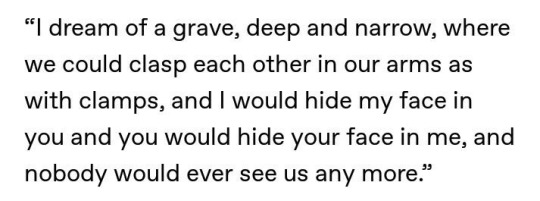
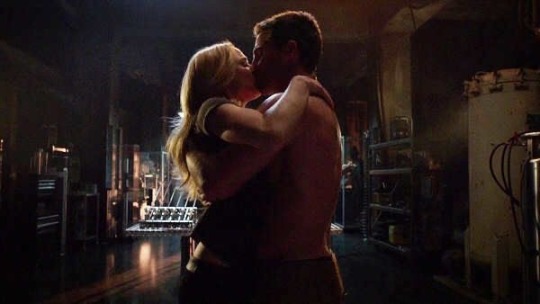



the bones below by sierra demulder// the castle by frank kafka // arrow 2x14// the last love poem I will ever write by gregory orr// by starlight by the smashing pumpkins/ rising tides by nora roberts.
14 notes
·
View notes
Text







1977.
A.E.S. Hudson Street starring Gregory Sierra
3 notes
·
View notes
Photo

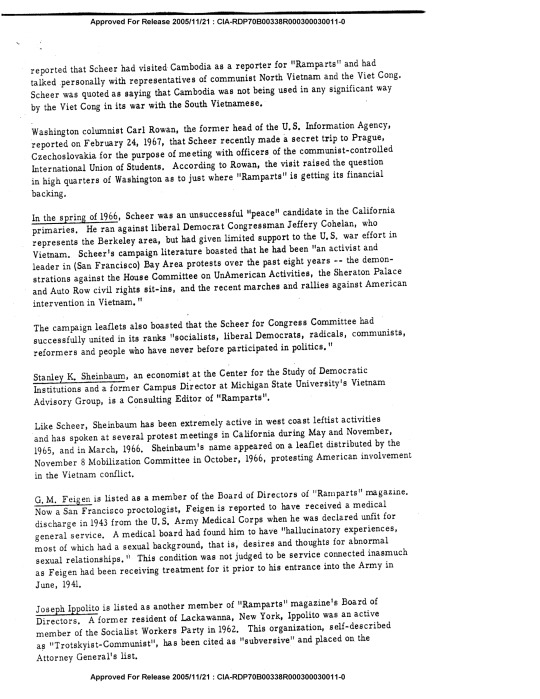
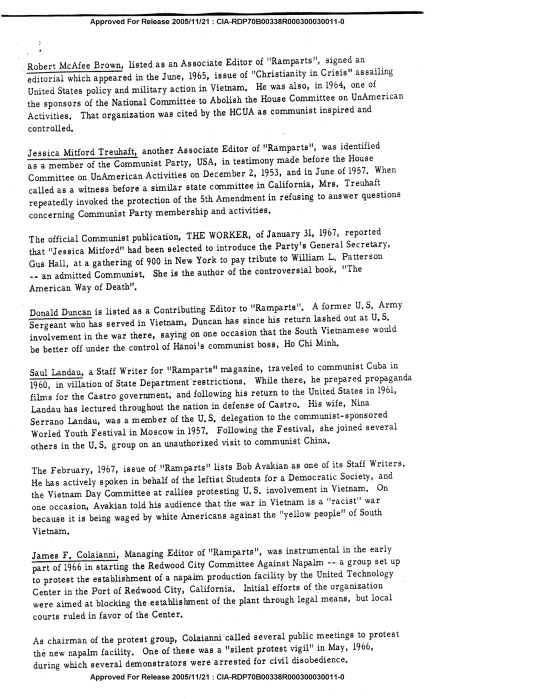

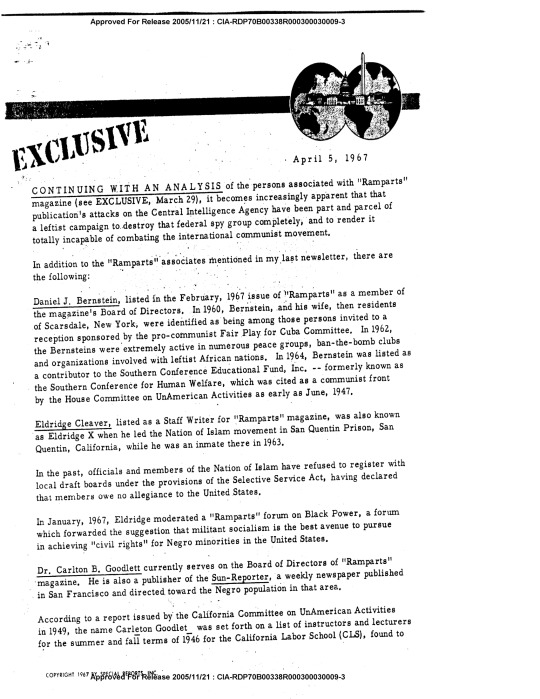

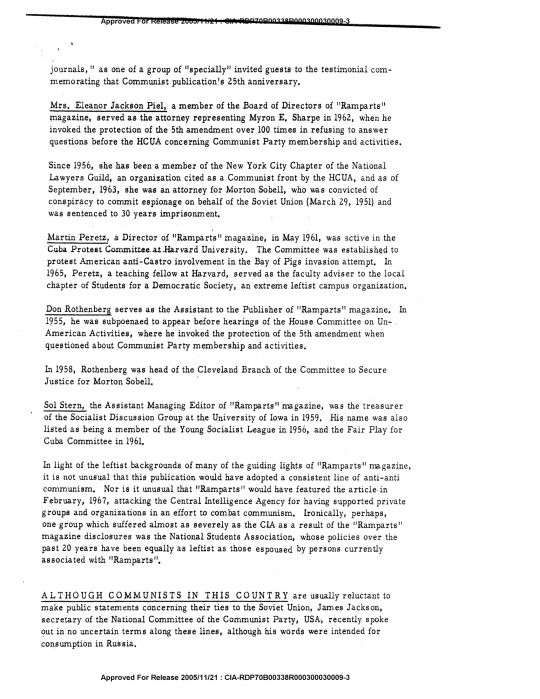

This series is shaping up to be about covert attempts by institutional power structures to undermine the health and safety of the international working class. The previous part, Part 4, is here. You can find a cool easter egg by seeing who the magazine in the bottom right image was delivered to.
The above is a dossier compiled by a right wing business intelligence group and purchased by the CIA not long after the events I’m about to share occurred. It is hosted on the CIA’s website for declassified files, the Reading Room. It was prepared by Fulton Lewis III, an outspoken supporter of the Rhodesian government and the son of a Hearst-sponsored anti-communist radio broadcaster, sort of the Tucker Carlson of the 40s and 50s. We don’t have the CIA’s own assessments because those are still classified.
When we last left the crew of the spaceship Ramparts, they were dealing with infiltration, incompetence, hedonism, an inability to secure funding, and the heady addiction of fame. Things were about to get worse as their own interpersonal disputes had come to the fore. Keating had seen his power at the magazine get whittled away as incentives in the form of shares for other backers became necessary. At the time, Hinckle counted among his friends Howard Gossage, an advertising whiz kid who helped popularize Marshall McLuhan and did the Sierra Club's first campaign. He frequently went to Gossage for advice. The two came up with a plan to push Keating into the 1966 Democratic primaries for the 11th district of California (later held by Leo Ryan, a CIA critic killed at Jonestown, and now held by Nancy Pelosi) as a way of reducing his influence on the day to day operations of Ramparts. In the midst of a meeting, they had two staff members slip away and come back with signs that said "Keating for Congress" and "Keating the people's choice".
By the start of 1966, however, the election bug had spread through the offices, both because it allowed Ramparts to make the news it reported on as salacious as possible, and because the Democratic Party had largely denied ballot access to anybody who was anti-Vietnam War. Bob Scheer, the foreign editor, ran in Oakland, and Stanley Sheinbaum, the Michigan State University professor who'd exposed the CIA's role on campus, ran in Santa Barbara. All gained 40-45% of the vote, mainly by cohering those opposed to the war. One thing in particular all three did was bring together the black vote (for instance, Julian Bond, mentioned previously in the series, campaigned for Scheer). Their campaigns were run by a coterie of Ramparts staffers, namely CPUSA member Carl Bloice as well as Berekeley lecturer Peter Collier, and were endorsed by a combination of black and Hollywood luminaries, for instance Dick Gregory, the civil rights activist and stand-up comedian, and Robert Vaughan, Napoleon Solo on the Man from Uncle and both a murderer and a victim on Columbo (see him argue about Vietnam on Firing Line with William Buckley here). Some of the opposition research on the three came directly from CIA files and was given to the establishment candidates by LBJ's press secretary Bill Moyers.
youtube
With the elections lost, Ramparts needed a new spin on things to bring back all the anti-electoral politics radicals. Fortunately, in nearby Oakland, a new group had just been founded called the Black Panther Party. Huey Newton and Bobby Seale like to portray their group as their own innovation, two upwardly mobile college kids shooting the shit late at night. The group they'd been part of prior to the BPP, the Maoist Revolutionary Action Movement, described them as "adventurists" for their desire to put theory to practice and finally organize in the community instead of just talking about it. Whatever the case, Newton learned from Robert Williams' Negroes with Guns that California law, influenced by white supremacist vigilanteism, allowed anyone to openly carry a weapon even in the presence of police. He went to Chinatown, bought copies of Mao's Little Red Book for cents, and sold them for dollars in Oakland as part of a course in organized self-defence, then used the money to buy shotguns and M-16s for use by graduates of the course. By February 1967, Ramparts staff writer Eldridge Cleaver had made contact at a speaking event for Malcolm X's widow Betty Shabazz, where the Black Panther Party founders and their cohort were the only ones armed. Cleaver invited them to the Ramparts offices for a sit down.
Remember the bit from the last part about Shabazz' bodyguards? That was Seale, Newton, and Co. Their arrival caused Hinckle's police buddies to get worried, and they put out an APB and surrounded the building, much to Newton's consternation. Hinckle suggested they go out for a drink, but nobody was buying it. Newton stared down a cop, who undid his holster. Seale put his hand on Newton, who told him off. "Don't hold my hand, brother." Seale released it, because that was his shooting hand. Newton taunted the officer. "You got an itchy trigger finger?... OK, you big, fat, racist pig, draw your gun!" All the Ramparts' staffers who'd come to watch as well as the officers' backup got the hell out of Dodge. Eventually, even the officer backed down. It was the first time the BPP had ever gotten the police to back down. It brought admiration from the entire Ramparts staff, who soon made the magazine the semi-official outlet of the BPP. And it brought Cleaver into their fold. They appointed him spokesman/Minister of Information within weeks. The following is the only news footage from that day shot after the incident, the rest having been lost, with Scheer in the background at one point:
youtube
And that wasn't even the most shocking thing going on at Ramparts. This series has previously mentioned the National Student Association as a bunch of debate nerds who essentially trained to have public speaking and organizing on their resume for future employers. The thing about the NSA was, it was a CIA front, and generally suspected as such. In 1947, there was an implosion of student politics' international facing groups. Those who had seen the Soviets fight in the Second World War generally accepted their claims to want world peace on their face, while the groups aligned with the Catholic Church teamed up with disparate right wing WASPs and Jews to fight back. The CIA had taken these students (to note, these were largely men in their late 20s or early 30s, grad rather than undergrad) under their wing and organized them into a front group that could report back on invitational events held in Eastern Europe. In turn, the top echelons of the NSA had to be sworn into legal secrecy as a prerequisite of participation, with the reward being entry into the old boys network of politicians and bureaucrats which virtually guaranteed a job.
The CIA fucked up. In 1965, the elected president of the NSA was Philip Sherburne. He was sworn into secrecy on the source of funding for their new HQ and general operations, as was normal for the group. But he disliked that they had only one source of funding, and he wanted the NSA to be independent. At the time, the grassroots in the organization who followed international politics and hewed to the left had managed to get some of their membership into power, but they had felt straitjacketed by the CIA's complete control of NSA finances. Many wanted to join in on the anti-war marches. Sherburne and others, spurred on by abrogation of Juan Bosch's regime in the Dominican Republic and the electoral fraud that brought the American-backed opposition to power, worked to find alternative sources of funding. They sent one an NSA man as part of the operation, but he got cold feet and worked with Sherburne to expose it. In response, the CIA had a number of top NSA men declared eligible for the draft in Vietnam. Bureaucratic fights ensued, involving the lives of students in America, Spain, Vietnam, and elsewhere. Finally, Sherburne went above the CIA's head to vice president Hubert Humprhey. In response, the CIA went and cut all of Sherburne's independent lines of funding. Unbenkownst to them, Sherburne had made a relatively radical student named Michael Wood his outside line to donors. He'd told Wood not to approach certain groups because they were backed by "certain government agencies". Wood had surmised that this meant the CIA and gone and picked up the only book out on the Agency: The Invisible Government, by David Wise and Thomas Ross. When he saw that the NSA's funding for 1966 had the same donor groups backed by the CIA, he realized Sherburne had lost and stole the files.
Twice the New York Times had published articles critical of the CIA in some form. In 1965, Texas congressman Wright Patman, initially elected on his support of the Bonus Army and ever a thorn in the establishment's side, had investigated 8 charitable foundations and found them to be CIA cutouts. The NYT had written an article on this as well as replies from the funded orgs (Encounter Magazine and the Congress for Cultural Freedom). In 1966, spurred by Ramparts' articles on MSU, NYT reporter Tom Wicker wrote of the allegations and added details of other botched operations around the world he'd heard from sources over the years. This brought the ire of the agency. In 1961, in response to details of the Bay of Pigs invasion being published in The Nation before it occurred, President Kennedy told his aides to bother him when details showed up in the New York Times because it otherwise did not matter. The CIA had actually worked hard to kill the very same story before the NYT could publish it so by the time the invasion failed, Kennedy apparently exclaimed that he wished more details had been published in the NYT so that the invasion would have been stopped. CIA agent Cord Meyer made the postscript of Part 3 of this series as the handler of much of the CIA's work through cutouts and allied groups like AFL-CIO, especially in in regards to the effort to influence the media known as Operation Mockingbird. Meyer and his wife, Mary Pinchot, were next door neighbours to the Kennedy's before JFK became president. Pinchot divorced Meyer after their child was killed in a car accident in 1957. She moved in with her brother-in-law, Ben Bradlee, later of Pentagon Papers and Watergate fame and played by Tom Hanks in the Steven Spielberg film The Post. In 1961, James Jesus Angleton, head of counterintelligence at the CIA, tapped her phone and discovered she was in a sexual relationship with JFK, including visits at the White House. When Pinchot was murdered in October 1964 in what was termed a robbery (a black man was arrested but acquitted), a friend of the family heard (he said) about the murder on the radio and phoned Bradlee first and Meyer second. Bradlee went to go find her diary and found Angleton sitting in her house (his garage) reading it. They later destroyed it. After that, Meyer became an alcoholic and compiled an enemies list of the CIA that included the Vice President. He was already fearful of a leak and told his subordinates to go after NSA staff but did not determine who Sherburne had told until his wiretaps of Ramparts phone lines informed him.
Ramparts, of course, knew that they had been tapped and kept phone calls brief. Scheer phoned Judith Coburn of the Village Voice and asked for her discretion. Wanting to break into a field dominated by men, Coburn felt like she was being called by a rock star, but nonetheless found it absurd that Scheer believed his calls to be tapped. She knew the CIA to be involved in assassinations like Lumumba's and thought their dealings with a minor org like the NSA were absurd. Ultimately, she helped by confronting a number of figures on their work. Eventually, a young WASP Harvard undergraduate who was on retainer from Ramparts named Michael Ansara got the call. His blog about it is excellent reading, located here. I quote:
One evening in the cold months of early 1967, my phone rang. A strange voice, obviously from New York asked, “Is this Michael Ansara?”
“Yes.”
“This is Sol Stern from Ramparts. Bob Scheer says you are our man in Boston.”
“Well . . . OK.”
“Listen I need you to do some work for us right away. I cannot tell you what it is about. I am calling you from a phone booth. Will you do it?”
“Well, what kind of work and are you willing to pay me for it?”
“It is research into two Boston based foundations. We will pay you $500.” 500 dollars was a lot of money. I had no idea how to research foundations, but I thought, what the hell. I could really use the money.
“Sure. What exactly do you want me to do?”
“I can’t tell you anything more than to find everything you can on the Sidney & Esther Rabb Foundation and Independence Foundation. They are based in Boston. I will call you in several days. You cannot call me. You cannot tell anyone what you are doing. You cannot mention the name Ramparts. Can I count on you?”
“I guess so. Sure. Yes.”
Ansara knew a much older man, an economist and lawyer who had sway in the Democratic Party named George Sommaripa. Sommaripa suggested Ansara go to a guy he knew at the IRS. Ansara did, and was told that under no circumstances could he have access to the files on two CIA cutout foundations. Chastened, Ansara complained to Sommaripa, who'd gotten the IRS clerk his job. A few days later, Ansara went back. The IRS clerk told him he could have any box he wanted, provided he did not go past the 990 form on the cover. He went past for the first two foundations and found that money came from an anonymous donor and in equal amounts went right out to the NSA. Ultimately, he pulled the files for 110 foundations, every single known group that the CIA used. He would look at the incorporation files for the foundations, see a lawyers' name, and look him up. Every time, the lawyer was an OSS operative during WW2, the predecessor org of the CIA. One of the lawyers had founded a firm with Sommaripa, a man named David Bird. Ansara confronted Bird, and Bird did not even stop to hang up on Ansara before phoning a contact at the CIA.
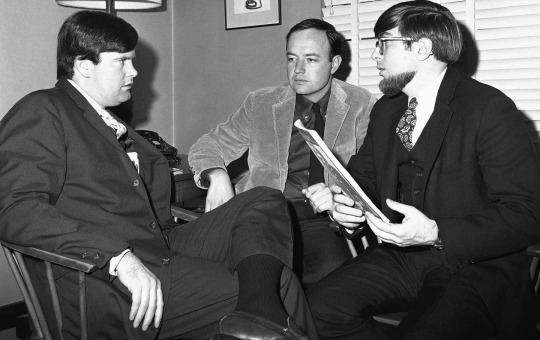
Left to right: Hinckle, Stern, Scheer.
A major corroboration of the story came from three students in New York who were disgusted by American foreign policy in Latin America. One in particular, Fred Goff, had been sent to the Dominican Republic with Allard Lowenstein (part 3) to observe the election of the pro-American candidate over the anti-American one. Goff had discovered that a man that Lowenstein had said he trusted on the country was actually a CIA agent, Sacha Volman. Another, Michael Locker, had done a paper about the CIA based on the NYT articles. Together, they walked in the doors of the AFL-CIO's American Institute for Free Labor Development and asked directly about the CIA, prompting a crashing sound and the institute's director, Thomas Kahn, planner of the 1963 March on Washington and the long-term romantic partner of Bayard Rustin, to scream at them.
The problem was when it came time to do the story. Sometimes, the researchers were paid by Ramparts. Other times, they received cheques from the Interchurch Center, a strange agency that serves as a front for charitable giving from the Episcopal, Lutheran, Presbyterian, Reformed, Methodist, and United Churches in America. James Forman, mentioned in previous parts, once led a picket in favour of reparations from them. Ramparts staff demanded they talk to them by picking up pay phones that would ring at designated times, a dismal failure. Other times, Hinckle, Scheer, and Sol Stern would fly in, book rooms at the Algonquin, and order massive amounts of takeout and booze. 15 to 20 people would be in a hotel room trying to negotiate who would be writing the story by continent, or by year, or by foundation. At one point, Coburn broke into the NSA HQ and unwittingly stole the original deed to their land, where it remained undiscovered in Ramparts' files till the 2010s.
On New Year's Eve, 1966, Lowenstein was hanging out with the new members of the NSA leadership when he informed them that Ramparts was writing about their relationship with the CIA. "The usual sloppy Ramparts piece, lots of flash, little substance," he said. The CIA had known since at least Thanksgiving. A lower level NSA official who'd just been sworn in went to meet with Hinckle and Scheer. The duo, while nonchalantly throwing darts, offered the Ramparts donor list as an incentive to tell all, but he refused. Sherburne attempted to find counsel in a lawyer who'd once opposed the CIA's new Langley HQ on NIMBY grounds. Meyer had threatened the lawyer's brother, working in Bogota with USAID, but the lawyer persisted. Undaunted, Meyer got word to Douglass Cater, the first president of the NSA and now an advisor to LBJ. LBJ bumped it to Lowenstein and the CIA to develop a response, which was to hold a press conference with an article in Henry Luce's (the man, not the monkey) Time Magazine that this was all well known since the 1965 congressional hearings, that the money was not that impressive, that the Soviets had done much more, etc.
This could have killed Ramparts. The IRS was already looking for any sign of foreign influence as an excuse to shut down the magazine. It needed some sort of relationship with the establishment press in a way that would let it gain influence without keeping it from the areas it wanted to report on. At the very same time, both Time and the NYT were reporting on the survival of Ramparts: Keating had attempted a coup and lost a board vote 13-1, with Mitford and other backers providing anonymous quotes that while they disliked the "Animal Farm-ish" nature of the issue, they needed Ramparts to stave off a fascist dictatorship in America. Hinckle followed by setting up an astounding agreement with the New York Times and Washington Post: they would get full access to Ramparts' files on the CIA right now, before the White House could set up a press conference, in exchange for letting them run full page ads for days for their next issue.
The day the Times went to press, February 13, 1963, was termed by former CIA director Richard Helms in his memoirs as "one of my darkest days". The press pushed, smelling blood. President Johnson ordered a suspension and review of CIA funding for outside orgs. The CIA initially tried to find a way to blame a dead president, Truman, but realized that its own documentation on the program, written by Cord Meyer, claimed that then-director Allen Dulles did not have any responsibility to inform the president of what he had ordered. Switching tactics, they turned on their press weapon, known as the Mighty Wurlitzer, and claimed that the CIA would have been remiss to not conduct these operations. "I'm glad the CIA is immoral" was the headline of an article by Meyer's boss, Thomas Braden. He described $250 million a year the CIA believed to be spent by the Soviet Union on cultural subversion, to which a mere handful of dollars from the CIA could not compare. No evidence for the accusations was provided, of course. Finally, Helms pulled in a favour from Robert Kennedy and had him testify to the press that his brother had authorized the funding, carried over from the days of Eisenhower. 12 former NSA presidents (including Lowenstein) came out and said the relationship was above board. All had worked for the CIA at least once after they'd left the NSA, but that was not revealed in their letter.
The strategy was a half-success. All the foundations funded by the CIA fell apart and students around the world became suspicious of CIA infiltration. Much of what Ramparts found was investigated by Congress repeatedly over the next decade, culminating in the reforms that came out of the Church Committee, which Helms claimed in his memoirs was sparked by Ramparts and Watergate. Certainly press readership was high, and many stories were published in the NYT and WaPo confirming and furthering the work done. At the same time, the CIA escaped with only a few new rules on its behaviour. President Johnson was a paranoic and was more concerned about using the CIA as a tool against his domestic enemies. He authorized a much larger role for MHCHAOS in punishing his enemies (remember the cryptonyms? MH was the most illegal, as it meant the USA). Many of those fingered were considered liberals in good standing and were part of the labour movement, particularly AFL-CIO higher-ups. They fell in line with the rhetoric about communist subversion because they knew they'd be the ones punished if things went further.
Interestingly, a few months later, the NSA held a vote on integrating an anti-Vietnam War and anti-draft stance into its platform. Traditionally, the CIA had worked from the shadows to suppress these votes. This time, Allard Lowenstein whipped in favour of the anti- stance and it won. Lowenstein soon became a fixture in the anti-LBJ movement, leading the call to bring Eugene McCarthy and Robert Kennedy into the Democratic presidential primaries. To a large extent, the organizations that were closed to the CIA had been products of decades-old relationships and worked in ways that nobody had bothered to improve. Within the CIA, a tension had always existed between bureaucrats with their own fiefdoms and up and comers with new ways of doing things. To a large extent, this scandal simply pushed the former out and made room for the latter, who would not do things like create financial records with the exact same dollar amounts going in and out, or act so bluntly when it came to manipulating staff. While the CIA may have suffered a little in the short term, it was an act of "creative destruction" that improved how the CIA did business. For Ramparts, on the other hand, things were going to get much worse now that they had drawn the ire of the intelligence community. While the magazine reached its peak distribution of 250,000 copies a month, it still did not bring in enough money to cover its expenses, and it was about to be faced with a much larger funding crisis: the Six Day War.
AFTER ALLEN DULLES RETIRED, the director bragged about the NSA operation. “We got everything we wanted. I think what we did was worth every penny. If we turned back the communists and made them milder and easier to live with, it was because we stopped them in certain areas, and the student area was one of them.”... Edward Garvey, who also worked at CIA headquarters, puts it more dramatically: “My God, did we finger people for the Shah?”... Stephen Robbins, despite his limited CIA involvement during his year as president, echoes Garvey’s concern: “It’s South Africa that keeps me up at night.”
#i am finding that i am including way too much information yet the details haunt me enough to make me put it in#i guess ramparts gets yet another part
26 notes
·
View notes
Photo



Sierra visited the Park with the Gazebo and flirted with Gregory Favreau a bit (he seems to be flirting with everyone lately)
38 notes
·
View notes
Text
spotify daylist tag game
ty for the tags dear friends @morning-star-joy @cupofjoel
rules: Go to Spotify, search for your daylist, and share the unhinged title of the playlist and 5 songs from the playlist

i waited till today cause all of my playlists yesterday were score tracks lmao
west virginia waltz by sierra ferrell
all shades of blue by gregory alan isakov
space and time by s.g. goodman
southwest serenade by story slaughter
just like leaving by bella white
no pressure tags (apologies if you don't use spotify, double if you've been tagged already!): @softlyspector @katsu28 @notrattus @5oh5 @joelscurls @mrsmando
6 notes
·
View notes